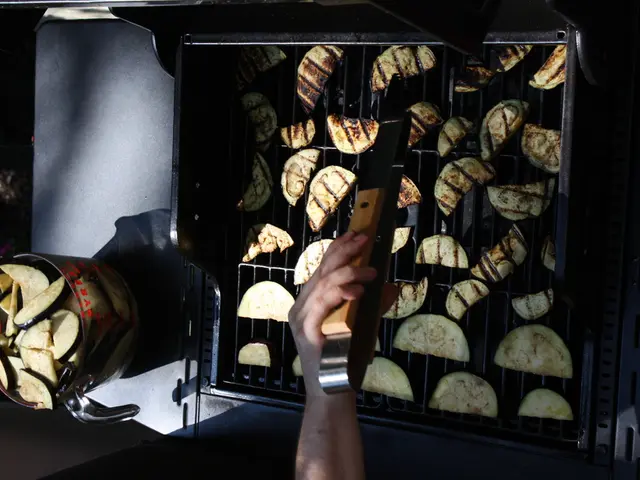Federal Government Reduces ÖBB Funding by 1.4 Billion, Projects Delayed
Updated Article:
- Budget Woes Delay Rail Projects for ÖBB
- Buckling Under Pressure:The Austrian Federal Government cuts funding for ÖBB by 1.4 billion euros, leading to delays in 26 regional rail projects.
- Holding Steady:In total, the federal government pledges 19.7 billion euros for the expansion and modernization of rail infrastructure, from 2025 to 2030.
- In the Crosshairs:Key projects, like the Brenner base tunnel and the electrification of the Erlauftal Bahn, face delays due to these cuts.
ÖBB aims to modernize its rail infrastructure over the next six years, investing 3.2 billion euros annually. With the federal government providing a total of 19.7 billion euros for the framework plan from 2025 to 2030, new rail projects worth 1.4 billion euros have been added. However, the fiscal squeeze means certain projects have to be put on hold. Austrian Infrastructure Minister Peter Hanke (SPÖ) believes that mobility and energy transition are strongly tied to ÖBB's plans. "We're all on board with the mobility transition," says Hanke. "But it's also about the energy transition, and here ÖBB is our major partner to drive it forward."
Seat Reservations: A quick fix for ÖBB's snafu## Big Spending
"Our ambition is outrageous," says the minister. "Nearly 20 billion euros in investments is an unprecedented figure for a framework plan." In the coming years, 2.3 billion euros will be invested in the Brenner base tunnel, 1.5 billion euros in the new south route, including the Semmering base tunnel, and 5.7 billion euros in the expansion of stations, terminals, and tracks. Moreover, 4.8 billion euros will be allocated for the upkeep of the rail network.
"Each billion euros in investment generates added value of 1.4 billion euros for the domestic economy," asserts Hanke. "Additionally, it safeguards numerous jobs." By 2030, ÖBB will acquire about 330 new trains, with 120 new trains arriving in 2025 and 2026. "The passenger transport offer will expand by 40 percent by 2030," says Hanke.
Steadfast Financing: ÖBB's Priority## ÖBB's Operational Budget
"We currently run 1,200 kilometers of regional trains and invest 2.4 billion euros in the region," says ÖBB CEO Andreas Matthä. Many regional rail lines need modernization and electrification.
Weather-Related Disruptions: Travel Warnings Issued## New Projects
- Double-track expansion between Hard-Fußach and Lustenau in the Bregenz metropolitan area, Styria
- Double-track line from Graz towards Frohnleiten
- Improving the 'Pass Lueg' line in Salzburg to reduce travel time between the capital and Bischofshofen
- Planning for the four-track expansion of the Wels-Lambach line
- Expansion of the Vienna S-Bahn Ring
Setbacks After Floods: West Railway Line Opens## Bracing for Criticism
Delayed projects in regional areas, such as the electrification of the Erlauftalbahn between Pöchlarn and Scheibbs (postponed from 2028 to 2033) and the upgrading of the Puchberger Bahn from Wiener Neustadt to Puchberg am Schneeberg (postponed by four years), have sparked criticisms from regional leaders like Lower Austrian Transport Provincial Councilor Udo Landbauer (FPO).
Regional Concerns:
- East:
- Delay in the expansion of the North Line until 2037.
- New "Airport Spine" completion delayed in 2035 due to a two-year delay.
- Connection between the East Line and the Airport Rapid Railway commencement pushed to 2028 instead of 2026.
- Four-track expansion of the Meidling - Mödling line expected in 2035.
- Modernization of the Hütteldorf - Meidling line (2036), electrification of the Erlaufbahn (2033), and line Herzogenburg - Krems (2040) on hold.
- Upgrades to train stations on the West Line (phased from 2029) and the upgrading of the Puchberger Bahn (2033) in progress.
- Tyrol and Vorarlberg:
- The commissioning of the Brenner North Access delayed by two years to 2039.
- Modernization of the Feldkirch-Buchs railway line delayed, with commissioning planned for 2029.
- New train stations in Bregenz and Bregenz Harbor scheduled to begin operation in 2034 and 2032, respectively.
- Delays in the new station in Götzis (2032) and the Imst-Pitztal station (2034).
- Expansion of the Wörgl terminal and the construction of the Kundl main track slated for completion in 2033.
- Carinthia and Styria:
- Modernization of the Ossiachersee Railway will be completed in 2036.
- Double-track expansion of the Werndorf - Spielfeld line scheduled for completion in 2039.
- Modernization of the Radkersburger Railway from Spielfeld-Strass to Bad Radkersburg delayed till 2036.
- Renovation of the Rothenthurn station in Carinthia pushed to 2028.
- Electrification of the Styrian West Railway delayed to 2033 instead of the planned 2028.
- Modernization of the Villach terminal delayed to 2029.
- Expansion and renovation of the Thermal Railway in East Styria under review.
- Salzburg:
- Modernization and expansion of the Pass Lueg line to reduce travel time between the capital and Bischofshofen.
(our website)Do you consent to data processing by Outbrain UK Ltd to display this content?
- The Austrian Federal Government's cut in funding for ÖBB by 1.4 billion euros has significantly impacted finance within the industry, particularly affecting the business sector and politics.
- The general-news regarding ÖBB's rail projects reveals critical delays due to budget constraints, including key projects such as the Brenner base tunnel and the electrification of the Erlauftal Bahn.
- ÖBB, as a major partner in energy transition, seeks steady financing of 19.7 billion euros for rail infrastructure improvement from 2025 to 2030, with a focus on new projects like the expansion of stations, terminals, and tracks, the doubling of rail lines, and the modernization of existing ones.





